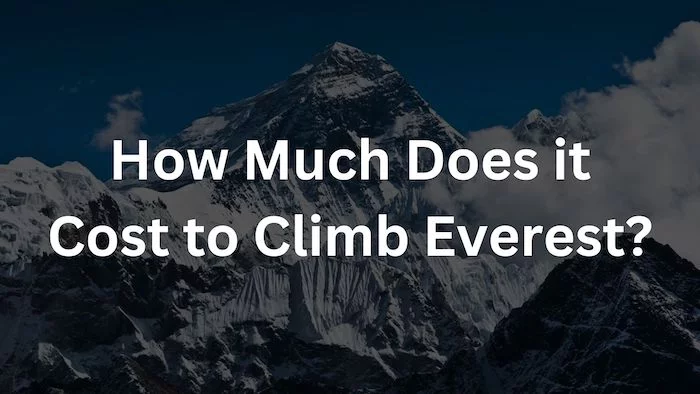Mount Everest, the tallest mountain on The planet, remains as an image of human undertaking and the craving to overcome the most noteworthy pinnacles. Climbing Everest is a difficult and extraordinary experience, yet one inquiry that frequently emerges is, “The means by which long does it take to climb Mount Everest?” The time expected for this fantastic undertaking relies upon a few factors, for example, the picked course, acclimatization needs, weather patterns, and individual wellness levels. In this thorough aide, we will dig into the different perspectives that impact the term of an Everest climb, revealing insight into the planning, climb, and related difficulties.
Overview of Mount Everest Climbing Duration
The time allotment it takes to climb Mount Everest differs in view of a few key variables.
Route Selection and Typical Timelines
The decision of course fundamentally influences the length of an Everest endeavor. Two essential courses are generally utilized: the South Col course from Nepal and the Upper east Edge course from Tibet. The South Col course traverses around 12 weeks from headquarters to culmination and back. Then again, the Upper east Edge course normally requests around 9 to 10 weeks for fruition. These courses of events envelop periods for acclimatization, climbing pivots, and likely weather conditions delays.
Acclimatization Process
Acclimatization, the method involved with acclimating to high elevation conditions, is a significant part of any Everest climb. This stage regularly includes various climbs to progressively higher camps followed by plunges to bring down heights for recuperation. The body needs time to adjust to decreased oxygen levels in the air, and this cycle directs a huge part of the general climbing plan.
- Appropriate acclimatization diminishes the gamble of height related diseases like intense mountain affliction (AMS), high-elevation aspiratory edema (HAPE), and high-elevation cerebral edema (HACE).
- For most climbers, permitting the body to conform to the outrageous elevations of Everest takes around 6 to about two months. During this time, they steadily climb higher on the mountain prior to endeavoring the last push to the culmination.
Factors Influencing Climbing Time
A few outer elements can impact the all out time expected to climb Mount Everest.
Weather Conditions: Capricious atmospheric conditions on Everest imply that climbers should be ready for delays. Startling tempests or high breezes can stop progress, prompting all-inclusive visits at higher camps or constrained withdraws.
Climber Fitness and Experience: A climber’s state of being and earlier mountaineering experience assume a huge part in deciding the speed at which they can rise the mountain. Those with more noteworthy wellness and experience might invest less energy on the mountain.
Logistical Considerations: The time spent on the mountain likewise incorporates strategic plans, for example, laying out and loading higher camps, fixing ropes, and planning with help groups.
South Col Route vs. Northeast Ridge Route: A Comparative Analysis
The decision of course is quite possibly of the most basic choice in an Everest climb, each offering novel difficulties and benefits.
South Col Route: Detailed Duration Breakdown
Generally viewed as the most well known course, the South Col course presents a more drawn out however more steady way to deal with the highest point.
Week-by-Week Breakdown
| Week | Activities |
|---|---|
| 1 | Arrival in Kathmandu, travel to base camp |
| 2 | Acclimatization treks to Camp 1 and return to base camp |
| 3 | Progress to Camp 2 for acclimatization, return to base camp |
| 4 | Establish Camp 3, return to base camp |
| 5 | Rotation to Camp 2, return to base camp for rest |
| 6 | Ascend to Camp 3, return to base camp |
| 7 | Final rotation to Camp 3, descend to base camp for rest |
| 8 | Summit push and descent to lower camps |
Northeast Ridge Route: Unique Aspects and Timing Considerations
The Upper east Edge course, while more limited in length, presents particular difficulties contrasted with the South Col course.
Key Differences in Timeline
- The climb along the Upper east Edge regularly includes less turns contrasted with the South Col course because of the more limited way to deal with the highest point.
- Climate windows assume a pivotal part in deciding when culmination endeavors can be made, influencing the planning of the jump on this course.
Frequently Asked Questions
What is the success rate of reaching the summit of Mount Everest?
The typical achievement rate for climbers endeavoring to arrive at the culmination of Mount Everest ranges between 40% to 60%, changing in light of the picked course, weather patterns, individual wellbeing, and experience.
How do climbers prepare for the extreme altitudes of Mount Everest?
Climbers go through thorough actual preparation, including cardiovascular exercises, strength preparing, and mimicked elevation preparing. Also, they partake in undertakings to other high-height tops to acquire insight and adjust.
What gear and equipment are essential for climbing Mount Everest?
Fundamental stuff incorporates high-elevation clothing, protected boots, bridles, head protectors, ice tomahawks, crampons, ropes, oxygen frameworks, and concentrated high-height tents and hiking beds.
What are the risks associated with climbing Mount Everest?
The essential dangers incorporate height ailment, outrageous climate, torrential slides, precipices, falls, and fatigue. Moreover, strategic difficulties, like stockpile deficiencies and congestion, can likewise present critical dangers.
How has commercialization impacted the climbing experience on Mount Everest?
Expanded commercialization has prompted issues connected with congestion, moral worries, and security suggestions. Swarmed courses and unpracticed climbers have raised cautions about the maintainability and wellbeing of Everest endeavors.
Conclusion
All in all, the term expected to climb Mount Everest envelops a bunch of elements, from course determination and acclimatization needs to individual wellness and outer impacts like weather patterns. Understanding these components is critical for anybody examining this great test. No matter what the timetable, an Everest climb requires careful preparation, steady assurance, and highest regard for the considerable powers of nature that characterize the world’s most elevated top.

